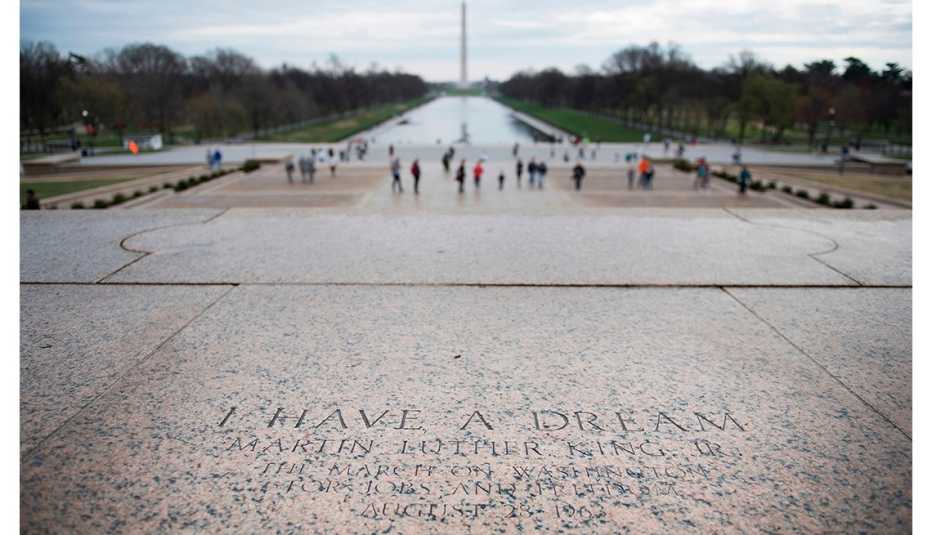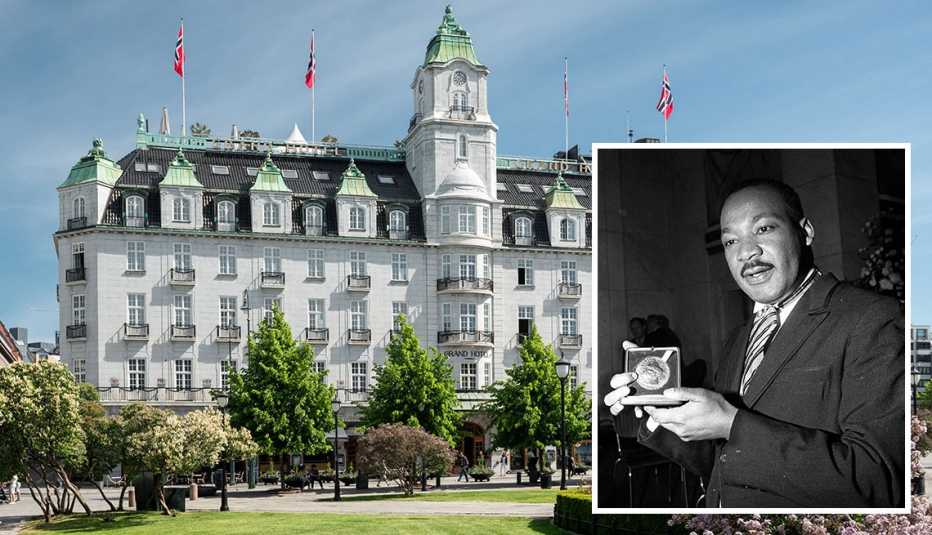AARP Hearing Center
Martin Luther King Jr., especially as an adult, was not a person who stayed in one place too long.
As an Atlanta teenager and student at historically Black Morehouse College, he spent two summers working in tobacco fields near Simsbury, Connecticut — his first taste of a life without Jim Crow laws. After earning a bachelor’s degree from Morehouse, he moved to Upland, Pennsylvania, for his bachelor of divinity degree and earned his doctorate at Boston University.
The success of the Montgomery, Alabama, bus boycott, which King helped lead, propelled the Baptist minister throughout the United States and to at least 20 countries around the world in his quest to end racial discrimination.


King’s admirers have many opportunities to follow the civil rights leader’s journeys. Here are 12 spots where you can start your trek.


1. Atlanta
Site: Ebenezer Baptist Church
Location: 407 Auburn Ave. N.E. King and his wife, Coretta Scott King, are buried behind the King Center on the same block; a block farther east is the home where he was born, which is closed for renovation.
Then: On May 3, 1936, King was baptized after the church’s two-week annual revival. He was ordained there Feb. 25, 1948, upon the recommendation of his father, and served as associate pastor.
On Feb. 7, 1960, after more than five years at Dexter Avenue Baptist Church in Montgomery, he returned to Ebenezer as co-pastor with his father so he could be closer to the Atlanta headquarters of the Southern Christian Leadership Conference (SCLC), which he cofounded. He remained co-pastor until he was killed.
Now: The original Ebenezer Baptist Church building is part of the 38-acre Martin Luther King Jr. National Historical Park. The National Park Service completed a two-part, 10-year restoration of the church in 2011.
In 1999, the congregation of Ebenezer Baptist Church constructed a building across the street. The church has more than 6,000 members.


2. Dublin, Georgia
Site: First African Baptist Church
Location: 405 Telfair St. A small city of about 16,000 residents, Dublin is about halfway between Atlanta and Savannah, Georgia.
Then: On April 17, 1944, at the Colored Elks Clubs of Georgia state convention, King, then 15, gave his first public speech, titled “The Negro and the Constitution.” He participated in an oratorical essay contest that the Elks sponsored — and he won.
On the bus trip back home that night, the driver ordered the teen and his female teacher to give up their seats to white passengers. “So we stood up in the aisle for the 90 miles to Atlanta,” he told Alex Haley in a 1965 Playboy interview. “That night will never leave my memory. It was the angriest I have ever been in my life.”
Now: The church, which was founded in 1867 and is the oldest Black church in Dublin, has services at 10:45 a.m. each Sunday. Each year on the second Sunday of April, the church and community sponsor a speech contest in the tradition of the Elks’ competition.
Across the street from the church is the city’s Martin Luther King Jr. Monument Park, where you can hear King’s first speech and see Atlanta artist Corey Barksdale’s colorful mural and Freedom Ascension sculpture. Both sites are part of a walking tour with more than 70 stops in Dublin.


3. Upland, Pennsylvania
Site: Crozer Theological Seminary
Location: 1 Seminary Ave. Upland is just north of the Philadelphia suburb of Chester.
Then: On May 8, 1951, after a three-year course of study, King graduated as class president and valedictorian with a bachelor of divinity degree from the American Baptist seminary. When he started in fall 1948, he was one of only 11 Black students at the school.
At the seminary, King honed his belief in what he called the “social gospel,” the importance of addressing economic insecurity, joblessness and substandard housing, and was introduced to the concept of pacifism.
Now: In 1970, the school merged with Colgate Rochester Divinity School and moved to Rochester, New York. Its original buildings, including the Old Main building that is on the National Register of Historic Places, were part of the western section of the campus of Crozer-Chester Medical Center before its closure in May 2025. The main building and its facilities are being sold off.


4. Boston
Site: Boston University School of Theology
Location: 745 Commonwealth Ave. The School of Theology is on Boston University’s Charles River Campus. The Mugar Memorial Library, where King’s papers are held, is adjacent to the School of Theology. On the fifth floor of the library, you’ll find the Howard Gotlieb Archival Research Center. A reading room is on the third floor of the library.
Then: King moved to Boston in 1951 to pursue his doctorate at Boston University’s School of Theology. In 1952, King met Coretta Scott, who was in Boston to study at the New England Conservatory of Music. They wed in 1953. While King worked on his doctorate, he helped organize the Dialectical Society, a group for African American theology students to discuss philosophical ideas and their application to the oppression of African Americans in the U.S. King earned his doctorate in June 1955.











































































